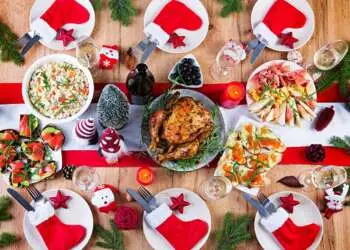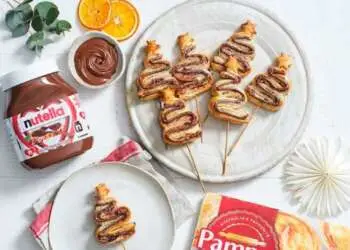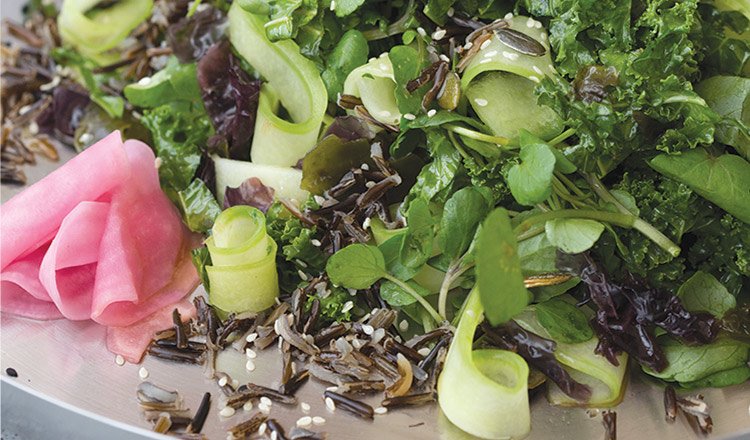Myth
Pavlova is from New Zealand.
My Truth
It has become a source of some national shame that Australia’s signature dessert might actually be the creation of our trans-Tasman rivals. Well, I am here to tell you not to worry. We’ve got this, Australia!
Russian prima ballerina Anna Pavlova toured Australia and New Zealand in 1926, and Australia again in 1929. Both tours were the biggest cultural events in those years. Many New Zealanders will tell you that pavlova was created in 1926 by an unnamed Wellington chef who decorated the dessert with kiwifruit in order to replicate the green roses on Anna Pavlova’s tutu. This is based on an unattributed story in a biography of Anna Pavlova written in the 1980s. Emeritus Professor Helen Leach of the University of Otago dismisses this version of events in her book The Pavlova Story: A slice of New Zealand’s culinary history, as she could find no evidence to support the claim.
Leach’s research did, however, find three desserts from this period named after Anna Pavlova. First, a 1926 layered jelly that features neither cream nor meringue, in a NZ recipe pamphlet from the Davis Gelatine Corporation. Then there’s the Dunedin version of pavlovas, which were small coffee and walnut meringue kisses, which also sounds nothing like our pav. The closest thing is a 1929 Kiwi recipe for ‘pavlova cake’, where the meringue is split and filled with cream and preserved fruit, like a meringue version of a Victoria sponge.
It was a recipe for one of these meringue cakes published in the Australian Woman’s Mirror magazine in 1935 that Western Australian chef Bert Sachse was seeking to improve upon when he created his cream and fruit topped dessert and called it simply ‘pavlova’. Sachse was head chef at Perth’s Esplanade Hotel, where Anna Pavlova had stayed in 1929, and it was his version of the pavlova that went on to become a worldwide hit. Kiwi claims of pavlova ownership hinge upon the fact that the meringue cake in the magazine was credited to an NZ reader, which fails to acknowledge that Bert’s creation was a distinct improvement on and development of the recipe.
It’s also something of a moot point, because we can show Australia had meringue cakes before they appeared in New Zealand. The recipe most commonly cited as NZ’s earliest filled meringue cake was in the 1926 edition of Emily Futter’s Home Cookery for New Zealand. However, in 1922, a very similar recipe for meringue with cream filling had appeared in Australian Home Cookery. That’s unsurprising, because Miss Emily Futter was the author of that tome as well! So surely this means the dessert Sachse was inspired by was originally Australian?
I’d also suggest that what makes a pavlova a true pav is that the meringue is topped with cream and fruit rather than filled with it. That’s what made Sachse’s pavlova special, and what we love about pavlova today. Here, too, Australia has the first claim, in the 1928 recipe for a ‘meringue cream gateau’ in NSW ’s Molong Express, which is a pavlova by another name. The meringue is even made with vinegar, like some modern pavs, and then topped with whipped cream and preserved fruit.
So now we have an overwhelming weight of evidence that the first meringue dish simply called ‘pavlova’ came from Australia; that the first recipe that reads like a modern cream and fruit pavlova came from Australia; and that recipe on which New Zealand’s pavlova claims are based seems to have originated in Australia too.
To close the case, I refer to the excellent research of New Zealander Dr Andrew Paul Wood and Australian Annabelle Utrecht, who have made it their quest to shed light on pavlova’s origins. Utrecht dismisses the idea that New Zealanders were the first to name a dessert after Anna Pavlova, pointing to a US ice cream bombe called ‘strawberries Pavlova’ that appears at the turn of the century.
Wood and Utrecht also argue that the meringue cake on which the NZ claim is based is actually a simplified descendant of the layered meringue cakes of the Austrian Habsburg Empire, such as the late-eighteenth-century Spanische Windtorte, or ‘Spanish souffle cake’. This is a nest of crisp meringue filled with fruit, cream and currants or grated chocolate, which is then topped or closed with a sheet of meringue. There’s no pillowy marshmallow centre, however, and no use of vinegar or cornflour.
In the nineteenth century, descendants of that Austrian layered souffle cake – like Germany’s schaum torte (aka foam cake) and baiser torte (aka kiss cake) – spread around the world with migration. German migrants who moved to the American Midwest in the mid- 1800s took the schaum cake with them, and mentions pop up in German-language US newspapers of the time, like in Die Freie Presse für Texas (‘The free press for Texas’) in 1884.
Is now the time to note that the parents of Bernard Herbert Francis (aka Bert) Sachse emigrated from Tschausdorf, Prussia, around 1855? The first recipe for schaum torte in Australia appears in the Adelaide Mail in 1935, the same year that Bert created his pavlova in Perth. It instructs for the upper crust of the meringue to broken off before the void inside is filled with fruit, and then the cream, with the broken crust used as garnish.
Now, I’d love to say that this filling of the meringue and adding the fruit first is enough to class the shaum torte as mere inspiration for our Molong meringue cream gateau, and I would, had I not discovered a recipe for ‘German Dessert’ in a May 1913 edition of the Ogden Standard from the US state of Utah. This is a large meringue made with vinegar and topped with crushed fruit and cream. So, it seems that we’ll have to share the pavlova honours with the United States – especially as the first recipes for adding cornflour to meringues also came from the US, in corn starch manufacturers’ recipe booklets of the 1860s.
Barring the discovery of new evidence that would lead to this case being reopened, I’m happy to stand behind the claim that the first true pavlova was made by Bert Sachse, even if it was based on a culinary idea that came from Germany or the US.

Matt Preston’s Pavlova Recipe
SERVES 10 PREP 20 minutes (plus cooling) COOK 1 hour 30 minutes
6 egg whites, at room temperature 1⁄2 teaspoon cream of tartar
11⁄2 cups (330 g) caster sugar
1 teaspoon vanilla extract
11⁄2 cups (375 ml) thickened cream 5 kiwifruit, peeled, sliced (see Tip)
Preheat the oven to 150°C (130°C fan-forced). Draw a 22 cm circle on a piece of baking paper. Turn the paper pencil-side down onto a large baking tray.
Use electric beaters (preferably a stand mixer so it’s easy to add the sugar) to whisk the egg whites and cream of tartar in a large clean, dry bowl until firm peaks form. Gradually add the sugar, 1 tablespoon at a time, beating constantly, until the sugar dissolves and the mixture is thick and glossy. When the meringue is glossy and you can rub a little between your fingers without feeling the grain of the sugar, beat in the vanilla.
Spoon the meringue mixture onto the paper, using the drawn circle as a guide to make a neat round. Use a flat-bladed knife to shape the sides of the meringue to make furrows by sweeping upwards.
Bake for 10 minutes, then reduce the oven temperature to 110°C (90°C fan-forced). Bake for a further 1 hour 20 minutes or until the meringue is crisp and dry. Turn the oven off. Leave the pavlova in oven, with the door closed, to cool completely.
Use electric beaters to whisk the cream in a bowl until firm peaks form. Top the pavlova with cream and heaps of kiwifruit. We can’t take everything from our Kiwi friends.
TIP
Yes, you can top the pav with strawberries, raspberries, pitted cherries, pith-free orange segments spritzed with rosewater, and so on – or, use three mangoes and two passionfruit, if you want to be parochially Aussie. You could even use Chinese gooseberries – which is what kiwifruit used to be called in English before New Zealanders hijacked them too!
Food nerd fact
As its archaic name suggests, the Chinese gooseberry finds its root in China. Its original name in Chinese, mihoutao – meaning ‘macaque fruit’ – refers to the monkeys’ love for it, according to the Compendium of Materia Medica, a sixteenth-century Chinese medical encyclopedia by Li Shizhen. The earliest mention of the fruit dates back to the Song dynasty in the twelfth century.
















